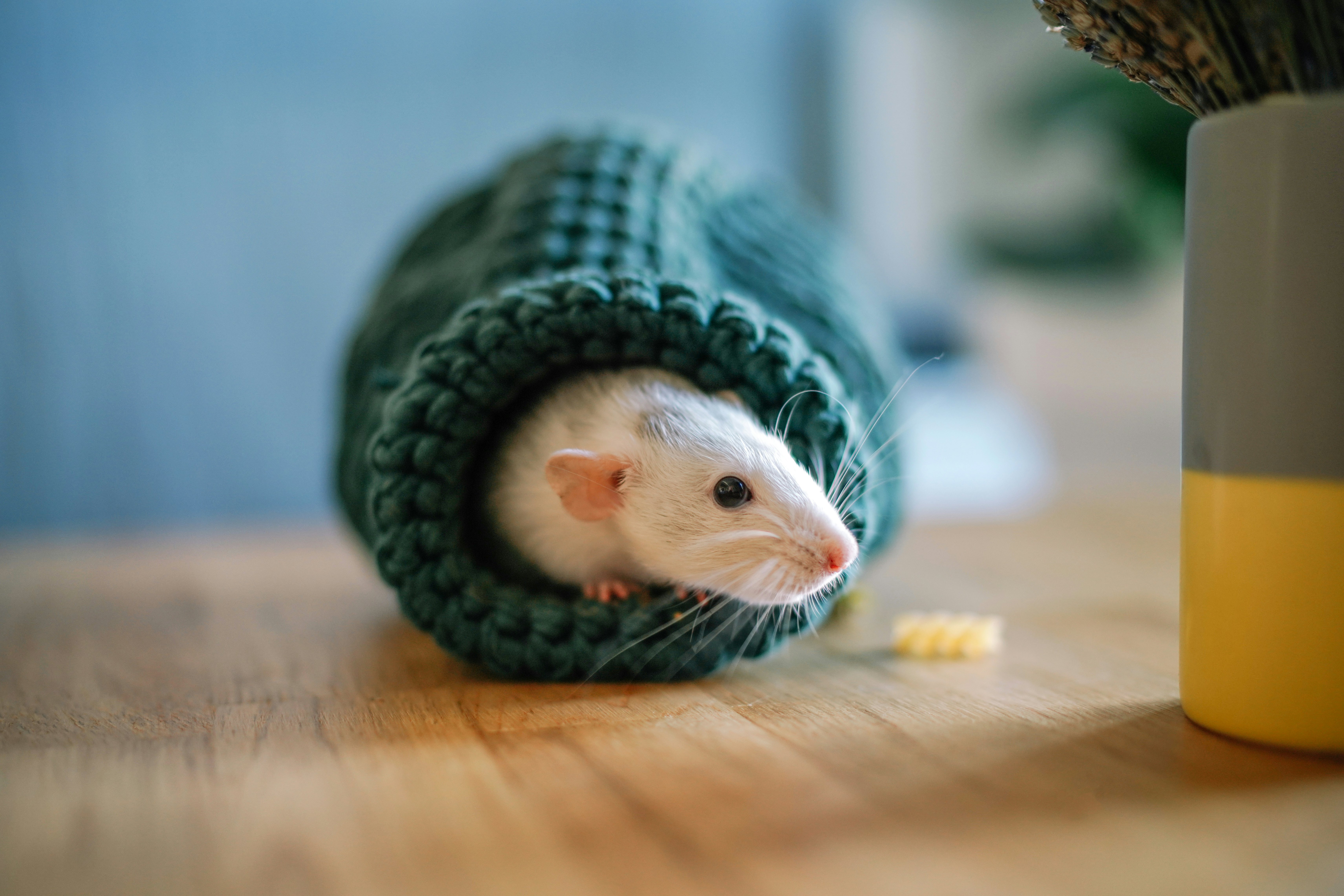
Almost a decade ago, Chongxi Lai, then a graduate student at the Howard Hughes Medical Institute’s Janelia Research Campus, was puzzled by a nagging question: Are animals capable of imagination?
“I was fascinated by how intelligence works in general,” Lai tells Inverse. “But particularly, I think one of the hallmarks of human intelligence is being able to imagine.”
Imagination requires a specific and crucial part of the brain: the hippocampus, the brain’s librarian, which meticulously organizes and stores memories. Studies in animals like rats suggest this area, too, is pivotal to their imagination. But what hasn’t been clear is whether rats are capable of consciously digging into their memories whenever they want, choosing to think about a particular location, much like we do.
In a study published Thursday in the journal Science, Lai and his fellow researchers tested rodent imaginations using brain-machine interfaces and a virtual reality environment. Through tasks requiring the rats to essentially jump to a location or move an object with the power of their thoughts (yes, just like a Jedi), the scientists found, by analyzing the animal’s brain activity, that the rodents do appear capable of thinking about specific locations on purpose. They also can hold those thoughts for about the same time scale — on the order of seconds — as human imagination.
“It’s a great finding,” Mayank Mehta, a professor of neurology and neurobiology at the University of California, Los Angeles, tells Inverse, adding more nuance to our understanding of how other animals are capable of a cognitive power we humans may take for granted.
Rodent Jedis
The hippocampus is a crucial region in the brain, resembling a seahorse in shape, that's essential for forming, organizing, and retrieving memories. It acts as the brain's internal map, not just helping us navigate physical space but cognitive space as well, keeping track of the topology of our past experiences. Furthermore, it plays a pivotal role in imagination and planning, allowing us to project ourselves into hypothetical futures or reminisce about past events.
“We wanted to test whether any animals, humans or not, can directly control their hippocampal activity that relates to their model of the environment or of the world, which is something that is critical for both richly detailed memory recall as well as imagination of complex scenarios, ” Albert Lee, an associate professor of neurology at Harvard Medical School and a co-author of the new study, tells Inverse. “You can’t do that with a simple stimulus. There has to be a model of the environment or a context that you can mentally navigate inside.”
To do that, the researchers created a brain-machine interface (or BMI), which they surgically implanted into the heads of four rats, the electrodes reaching deep into the hippocampus. The BMIs were used to record neural activity, specifically of a group of neurons called place cells, first discovered in the early 1980s, which neuroscientists noticed became active whenever rodents perceive themselves in a particular location.
While wearing these tiny brain activity-recording headsets, the rats interacted with a virtual reality world on a screen, navigating through it atop a spherical treadmill that let them go in whichever direction their rodent hearts pleased.
While running to specific locations, which the team dubbed as “goals”, within this grey-scale VR world — which Lee says was more like an open arena than a rat maze — the rodents had their brain activity tracked. The researchers taught a deep neural network (aka artificial intelligence) to associate the brain activity, which Lee says was unique for different locations, with the animals’ sense of place within the virtual environment
“You test the decoder by saying, ‘I’m not going to give you what location the animal was touching — I’m just going to give you the neural activity, but you have to guess what location it was,’” says Lee. “We then tune so that it matches.”
Once they had the AI decoding the rats’ brain activity up and ready, it was time to put the imagination to the pedal. Lai devised two exercises for the animals to do. One was called “jumper” after the 2008 film, where the rat had to mentally navigate itself to a goal location. If it succeeded, it was given a reward.
“In the jumper task, the whole environment will move relative to the animal. We suspect that it actually spurs or encourages the animal to move because if it doesn’t move, its mental position will move a little bit, and the whole [environment] will actually move,” says Lai, adding that he personally noticed this effect himself when playing VR games.
In the second task, aptly named “Jedi,” the rodents were required to mentally move a virtual cart to the goal and keep it there. The rats weren’t allowed any free range of movement as they were fixed in one spot.
“The significant difference between the jogger and Jedi is that in the jogger task, the animal touches the goal, and the goal disappears and reappears in a random location,” says Lai. “In the Jedi task, when the control cue [which the rat is maneuvering] touches the goal cue, the goal cue will not disappear. It will remain there for a maximum of three minutes, giving us the chance to see whether the animal can hold the mental location for an extended period of time.”
For three out of the four rats, it seemed like they could. The researchers found the rats can accurately and flexibly control their hippocampal activity, mirroring the way humans presumably do. And the rodents looked like they were imagining: They could hold their thoughts on a given location for about as long as we do — on the scale of seconds — when we revert to the inner world of our minds.
Revolution brain-computer interface devices
Mehta says this study is one among many providing evidence that humans aren’t the only ones capable of higher-level thinking, although other studies have found brain activity corresponding with imagination occurring on the scale of milliseconds rather than several seconds.
Lee acknowledges more research needs to be done to get a better, more well-rounded picture of what rat imagination truly looks like.
“Seeing how much more elaborate imagination-like patterns these rodents can generate, that is one direction we’d like to [explore],” says Lee. “Whether they’re thinking about different environments from the one they’re in, whether they’re thinking about environments when they’re in the dark, whether they want to go to a specific trajectory, these are all things that [bring us] closer to human scenario simulation.”
With the rise and commercialization of brain-computer/machine interfaces such as Synchron or Elon Musk’s Neuralink, Lee and Lai see their research as part of the equation promising to revolutionize the quality of life for those with debilitating health conditions.
“Let’s say someone is in a wheelchair or a room, and they want to control what items come to them, you can imagine they could just think about the locations they want things to move at. Basically, [they could] operate at that high level instead of controlling low-level operations like moving slightly to the right or left. You could just say, ‘I want to be in front of the freezer’ or ‘I want the coffee cup to go into the coffee machine and then to me.’”
The sort of engineering of imagination may take time but might sooner than we think, and all thanks to the humble rat.







